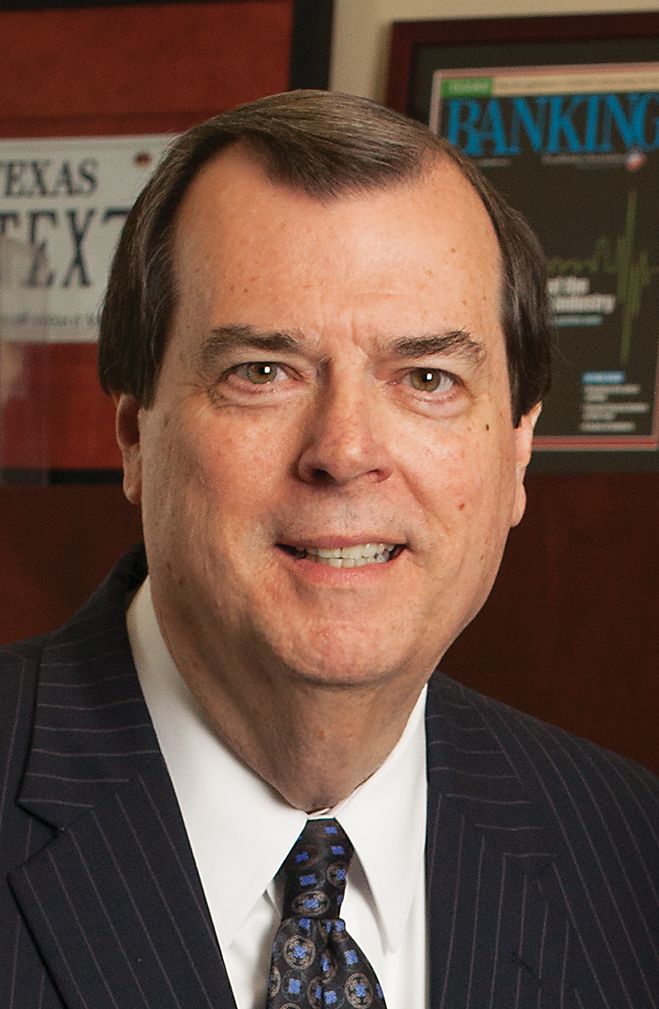Q&A with Charlie Powell
Charlie Powell, president and CEO of Ciera Bank, has been a banker in Fort Worth for just over 30 years. The Fort Worth Business Press asked him to reflect on changes in the banking industry since he began his career.
How long have you been a banker in Tarrant County?
I’ve been a banker in Tarrant County for just over 30 years, so my timeline pretty well matches that of the Fort Worth Business Press. I began my career and advanced to become president/CEO at Bank of North Texas under the leadership of the board, which included Dee J. Kelly. My career path included working at Bank of Commerce until it sold to Frost Bank in 1999. Then I was fortunate to become market president of Bank of Texas until the opportunity to join Ciera Bank arose three years ago, where I now serve as president and CEO.
Tell us about banking in the 1980s
In the 1980s, customers could only confirm their checking account balance by visiting the bank, where they actually spoke with a human teller. Today you can perform a multitude of services including access to your accounts, sending or transferring funds or paying bills while enjoying lunch or during a coffee break. Mobile banking allows 24/7 service rather than what used to be known as “banker’s hours” from 9 a.m. to 3 p.m.
Back then, banks depended on loans and checking accounts to anchor relationships with customers. Customers actually received their [cancelled] checks and deposit slips with their monthly statement, whereas scanned copies are part of their statements today.
Online banking initially gained popularity in the late 1980s, but computer access was terribly slow due to the limitations of dial-up connections. Today, online banking combines with mobile banking to replace visits to the brick-and-mortar banks. I believe continued technology will only enhance these services for the consumer in the future.
What are some of the technologies you recall from the ‘80s and through today?
People may not know that banks and new-car dealerships, along with the government, were among the first major adopters of fax machines. This now-primitive technology allowed us to expedite approvals so new-car buyers could quickly complete their purchases and drive their cars home. I recall watching the installation of ATMs back in the ‘80s and wondering if customers would ever utilize them and forego the personal touch of tellers. Most customers still preferred to walk into the bank lobby or talk with a person at the drive-through window.
Debit cards arrived in the ‘80s, representing the next advancement. Further technology was a combination: remote capture, and banking apps, which allow customers to make mobile deposits from any location. You can now utilize technology that allows your thumbprint on your smartphone to access your account. The next generation will most likely tie your access to a scan of your eyeball. Oh yes, and ATMs now outnumber bank branches nationwide by almost five to one!
How has the banking landscape changed?
Branch banking came to Texas in 1987, when national bank holding companies acquired existing Texas banks and opened additional locations throughout the state. Another major change is the lower number of employees within a bank because technological advancements have increased operational efficiencies. Now, with banking apps and mobile banking, we’re seeing a great number of banks operate with fewer employees and smaller spaces. Digital technology continues to change much of the customer-banker relationship.
The other major change has been the increase in the layers of regulatory oversight procedures. This adds significantly to the administrative behind-the-scenes costs that banks incur in serving customers in today’s regulatory environment.
Despite the changes in the bank landscape and technology, what is still the same about banking?
Two elements will never change. First, to be successful, bankers must take care of all their customers’ needs. At the end of the day, if a banker fails to respond to you in a timely manner, you will not remain that bank’s customer for very long. Customers expect, demand and should receive exceptional service. That means timely returned phone calls and emails.
Second, banking will always revolve around relationships with the customer and their variety of needs, whether it be lending, trust services or investments. We still operate by the same basic principles: We are here for one reason – to provide convenience and accessibility and to take care of our customers’ needs.
Where is banking going in the future?
Banking offers a career of opportunity. While the industry was male-dominated when I started in the ‘80s, banking has provided a very welcome environment for women to pursue careers and advancement. Women today are in powerful leadership roles across the entire financial services sector.
In addition, the dynamic sustained growth in North Texas opens doors in the financial services industry for both entry-level prospects seeking a career and experienced bankers. Ultimately, the most successful bankers will develop valuable relationships with their customers and remain integrally involved in support of their communities. Bankers should never forget to express sincere appreciation to customers for choosing them as their financial partner.






